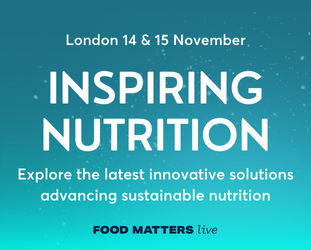Nutrition in pregnancy: foods to eat, foods to avoid and the truth about cravings

From pickles and peanut butter, to ice cream or that one specific burger you ate years ago, pregnancy can throw up some interesting cravings. Conversely, it can also turn you off your favourite foods. But what’s the optimal nutrition in pregnancy?
There are plenty of old wives’ tales related to the different parts of pregnancy, and what one eats during is no exception. Some cultures in Asia are wary of eating or even handling certain foods for fear of complications during pregnancy or birth; while in some Latino cultures, it is believed not honouring cravings properly can result in birthmarks. Elsewhere in the world, cravings can supposedly dictate the gender of the unborn baby – sweet cravings indicate a girl, while salty are a sign for a boy.
There is no scientific basis for these beliefs, but they still widely influence public thought. All of this is to say, being pregnant often wreaks havoc on the body’s relationship with food – at a time when nutrition is crucial – and information relating to food can be misleading.
Cravings: myths, facts and half truths
Most societies and communities have their own nuanced beliefs about different aspects of pregnancy nutrition. Many accurate ideas cross social and geographic boundaries – for instance, reducing caffeine and avoiding certain mercury-containing fish and unpasteurised dairy. But with such a wealth of opinions on pregnancy, some ideas are taken as fact where they shouldn’t be – or at the very least, not considered the whole truth.
One good example is ‘eating for two’. It is of course hugely important to maintain a sufficient and satisfying diet through pregnancy, but as Nutritional Therapist and Paediatric Nurse Hannah Love says, “pregnant women only need around 300 extra calories a day.” Additionally, she says, it is important to remember these extra calories are, in essence, going toward nourishing the baby. For this reason, nutrient- and fat-rich foods are preferable, like avocados, nuts, (properly cooked) eggs and fruits and vegetables.
Another commonly held belief is that folic acid is the most important supplement for pregnant people to take. Hannah says this is only a half truth: “Gone are the days that we only recommend folic acid for pregnant ladies. All vitamins work in synergy, and you need good levels of all nutrients in order to absorb.”
That said, certain vitamins should be consumed sparingly. Vitamin A, for example, can harm unborn babies when eaten in large amounts. Foods which contain high levels of vitamin A include liver and liver products like pâté – these should be avoided where possible.
Deficiency-induced cravings
Though medical care during pregnancy is better than it ever has been, there still isn’t a concrete and widely accepted understanding of just where things like cravings and aversions come from.
Registered Nutritional Therapist Gail Madalena explains that cravings are generally thought to be kicked into action by the very drastic shift in hormone levels which pregnancy brings on, as well as growing demands for blood flow and energy. “The body is going through a period of rapid cell division, not only growing a baby, but also a whole new organ in the form of the placenta,” she says. “This is an extremely demanding process that can frequently lead to nutritional deficiencies.”
It is therefore a widely held belief that craving certain foods points to a deficiency of nutrients – craving steak, for example, is your body’s way of telling you to get more iron into your diet. Both Gail and Hannah say this is a good rule of thumb to follow.
“Pregnant women often gravitate to the foods they are deficient in – so if they need more iron, they crave green vegetables or red meat,” Hannah explains to Food Matters Live. Additionally, some pregnant people find they crave fruit and ice if they can’t stomach water, Hannah says.
Beyond deficiencies, some studies suggest that pregnancy cravings are also tied to culture – and in fact in some places in the world, they aren’t common at all. Where they are experienced, cravings tend to change between countries. A study from Japan, for example, found the most craved food during pregnancy to be rice – a far cry from the standard cravings usually found in UK pregnancies.
To honour, or ignore?
There is no hard and fast rule when it comes to actually honouring pregnancy cravings. Eating food your body is intensely craving can be both satisfying and comforting during what can be a very stressful time. Registered Dietitian Nichola Ludlam-Raine’s advice is to “be kind to yourself.”
“Try to keep mindful of portions and frequency of certain foods, but remember to listen to your body’s needs too,” she explains. While this advice isn’t carte blanche to only takeaways and sweets, Nichola says honouring cravings in sensible amounts is good practice.
It can feel stressful to have cravings for certain foods – particularly if these foods are hard to access, or are traditionally viewed as unhealthy. One way Nichola recommends coping is by eating little and often, and having nutrient-rich snacks prepared and ready to go. By removing the influence of hunger, cravings are less likely to be overwhelming, she says.
Gail adds to this that some of the most common food cravings can be satisfied in a healthier manner. For her own clients at Baked Fertility and The Natural Balance, she recommends:
- Salty foods: this craving can be linked to low sodium levels. Opt for foods containing naturally occurring sodium, like olives, anchovies, and seaweed, and try to limit crisps and fried foods where possible.
- Sweet foods: many crave chocolate because it contains high levels of the chemical tryptophan, which produces the happy hormone serotonin in the brain. Where possible, try to switch to dark chocolate. Other sweet treat fixes could include yoghurt, fresh berries and smoothies, which Gail says can give that all-important sugar boost with a built-in nutritional hit.
- Red meat: Gail says craving red meat could be a sign of iron deficiency or potential anaemia. This is extremely common during pregnancy and other symptoms include extreme fatigue and low energy. Your midwife and GP will monitor iron levels throughout your pregnancy to keep a check on this.
- Dairy products: another common craving is dairy in the form of cheese and ice cream. This may be linked to a calcium deficiency. Gail says a good course of action is to try increasing food sources such as milk, yoghurt, fortified milk alternatives and cereals, fruits, and vegetables such as broccoli, kale and collard greens while limiting things like ice cream, which are less nutritionally dense and high in sugar.
When cravings turn dangerous
When honoured as part of a healthy and balanced diet, most cravings are not an issue. However, the general rule that pregnant bodies crave what they lack can be inaccurate in certain cases. Sometimes it is food itself which prompts cravings, and this should be paid attention to particularly when unhealthy or dangerous cravings kick in.
Nutritional Therapist Hannah recalls one former patient suffering from Pica, an eating disorder characterised by a desire to eat non-food items. Pica is surprisingly common in pregnancy, and the patient in question craved the taste of bricks. “When we looked into her diet, she was eating excessive amounts of red meat – up to 15 steaks a week due to advice from her GP to increase red meat as she was slightly anaemic,” Hannah says.
“Eating excessive meat can pull calcium from the bones to neutralise the acidity of the diet. Her body was depositing this as kidney stones and craving bricks to further neutralise the blood,” she says. “As soon as we changed her diet to a more plant-based, alkalising, diet the craving for bricks stopped.”
While Pica is common, it should be discussed with a doctor, midwife, or other healthcare provider as soon as symptoms or cravings appear.
What optimal nutrition looks like at any age
There is no one-size-fits-all diet that pregnant people can follow to achieve optimal nutrition. Everyone requires different nutrition based on the make-up of their body and lifestyle.
Certain circumstances require certain eating habits. For example, Nichola says that all pregnant people should take on extra folic acid in the first 12 weeks. She also says that adequate protein intake can be especially important for women over 40. Pregnancy already requires a large consumption of protein, and past 40 is when most people start to see their muscle mass decrease.
When it comes to mealtimes generally, however, Gail says thinking about the composition of your plate is a good way to stay on track. She explains the “healthy plate model” features half a plate of vegetables, one quarter of lean protein sources (including vegetarian options), one quarter of complex carbohydrates and a thumb-sized portion of healthy fats.
Beyond food, Gail says it is a good idea to check out other wellbeing metrics within your life too. “Stay hydrated, aiming to drink at least two litres of water per day,” she says. “And look at your bedtime routine and sleeping patterns – the target is to be getting eight hours of sleep per night.”
Eating while experiencing morning sickness may feel like an insurmountable task. However it is still very important to ensure adequate nutrition during this time. Hannah says: “If you suffer from morning (or all day) sickness try snacking on small amounts through the day: a couple of nuts, banana, a little bit of cheese, a spoon of peanut butter, a little mix of dried fruit and nuts. These can help keep blood sugar regulated.”
It takes a village to grow a baby
There are many community resources available throughout pregnancy which should be taken advantage of to ensure adequate nutrition. Many local councils run nutrition groups for pregnant women to attend.
The benefit of community-based nutrition initiatives is that they ensure all babies and parents get off to a good start. Additionally, they provide education to parents who need extra help formulating diet plans.
Lambeth Council in London, for example, runs the Community and Nutrition Programme (CAN), an 8-week service for pregnant women with a BMI of 25 and over. Sessions are around 60 minutes, taken either as part of a group or individually, and focus on learning more about nutrition, setting dietary goals and recipe adaptation.
Additionally, the UK offers pregnant people free access to pregnancy vitamins. These are available through Healthy Start in England. The organisation can also help people with funds to buy milk, fruit and vegetables, tinned goods, and formula.
A list of foods to eat and foods to avoid
There are plenty of foods that can be eaten in abundance during pregnancy, and there are those which should be eaten in moderation or avoided altogether.
Foods to eat
- Milk, cheese and yoghurt: these are great for protein and calcium, which the body needs plenty of during pregnancy
- Legumes: chickpeas, lentils, peas and beans are another great source of protein, and also fibre, iron and folate
- Whole grains: rice, quinoa and oats are packed with B vitamins, fibre and magnesium, which are great for pregnancy
- Avocados: high in good fats, as well as potassium and vitamin B6 which can tackle pregnancy woes like leg cramps and nausea
Foods to eat in moderation
- Caffeine: the NHS recommends consuming no more of the equivalent of two cups of coffee a day for pregnant people. Watch out for caffeine from other sources too, like tea, green tea and chocolate
- Sweet potatoes: these are a good source of vitamin A, but should be eaten only occasionally so as not to get too much of this vitamin
- Herbal tea: the NHS recommends no more than four cups of herbal tea a day
- Dried fruit: many dried fruits are good sources of iron, calcium, potassium, and antioxidants, but are higher in calories than fresh fruit and should be eaten in moderation
Foods to avoid
- Mercury-containing fish: this includes swordfish, mackerel and tuna
- Non-Red Lion eggs: eggs which feature the British Red Lion stamp on their shell are a great source of protein, however those which don’t cannot be guaranteed to have been reared and handled to adequate standards and should be avoided
- Liver and paté: these foods contain high levels of vitamin A
- Soft cheeses: brie, camembert and goats cheese may contain listeria bacteria and so are best not included in pregnancy diets
- Alcohol: it is advised to completely abstain from alcohol during pregnancy, since no amount has been scientifically proven to be safe during this time. Any amount can increase the risk of foetal alcohol syndrome and hinder brain development









